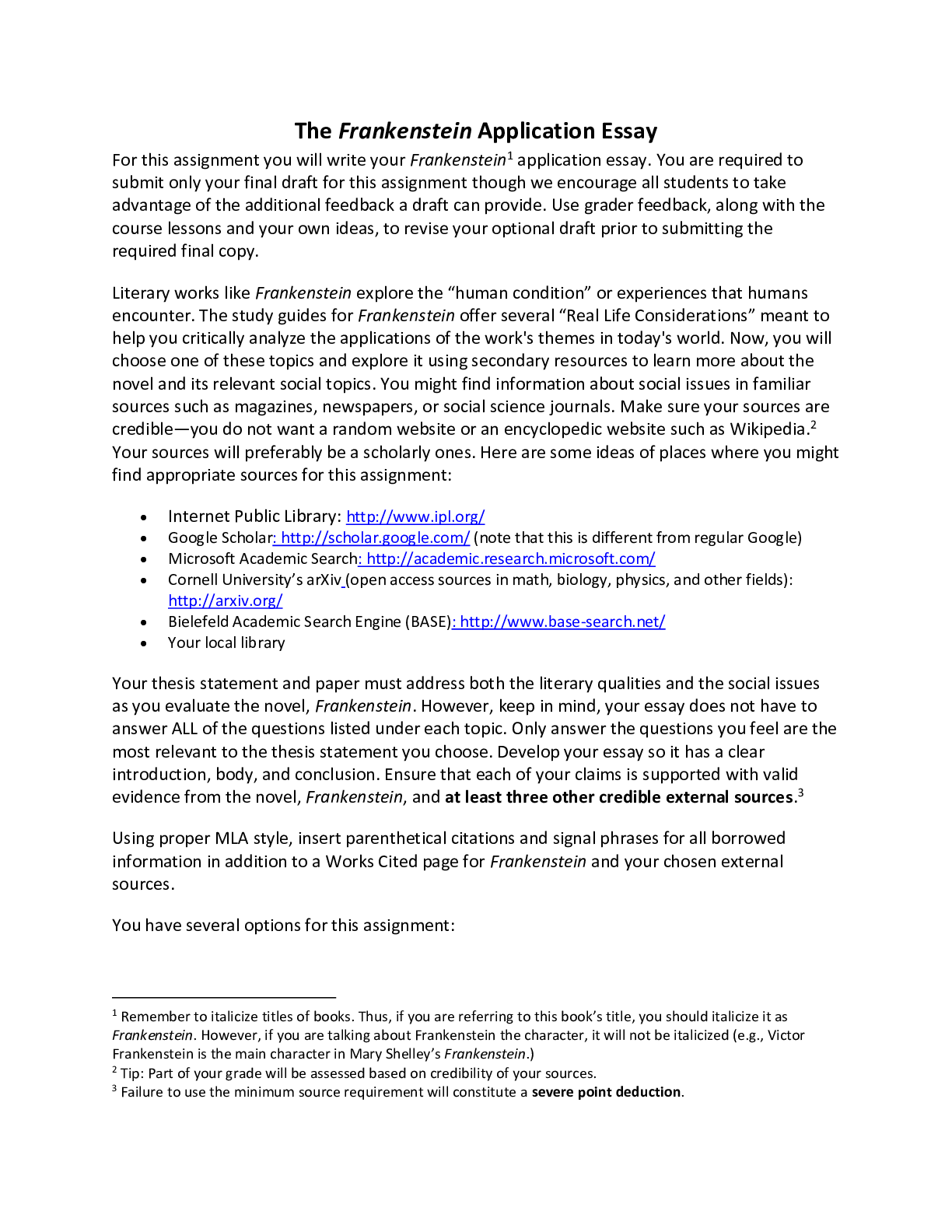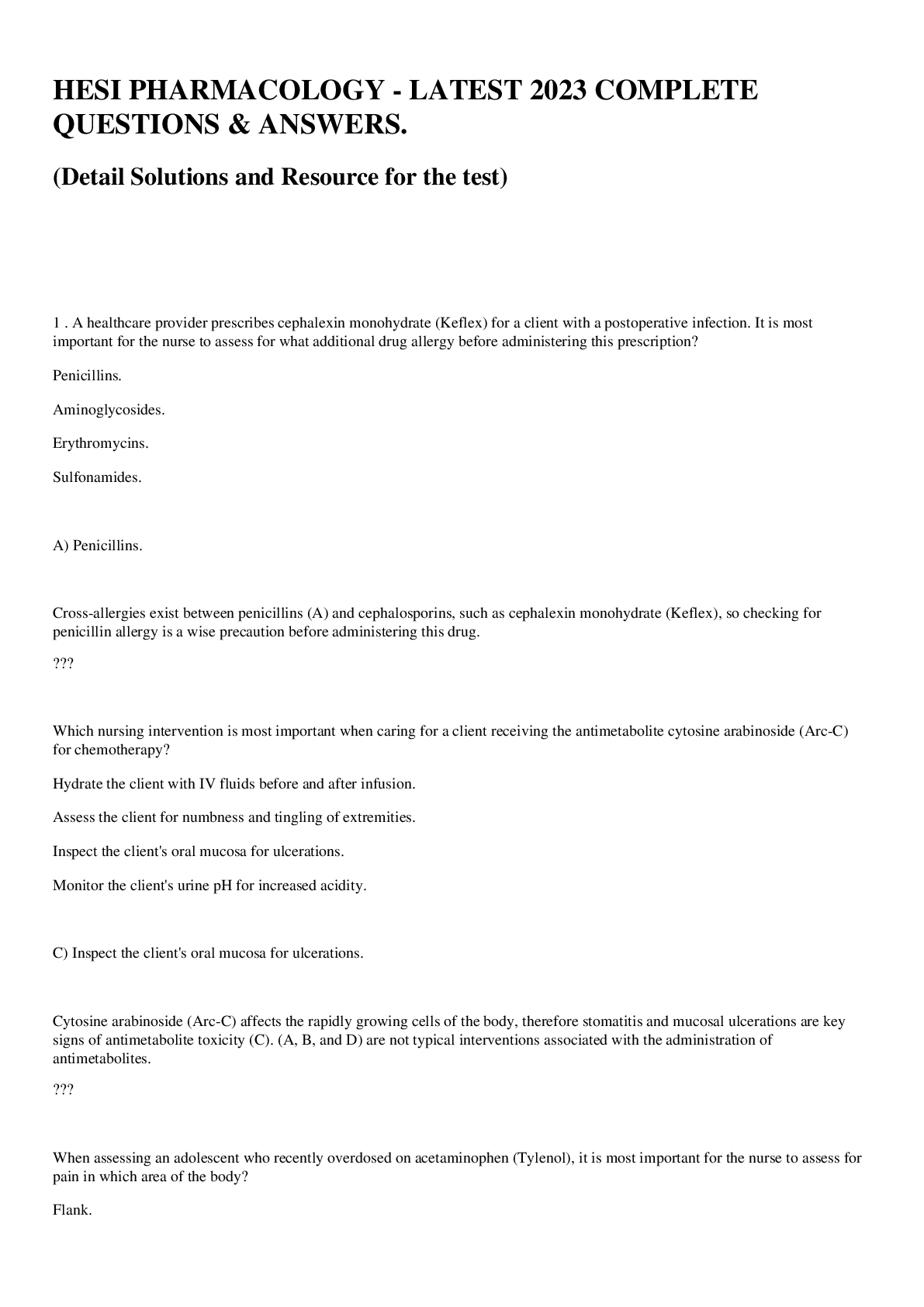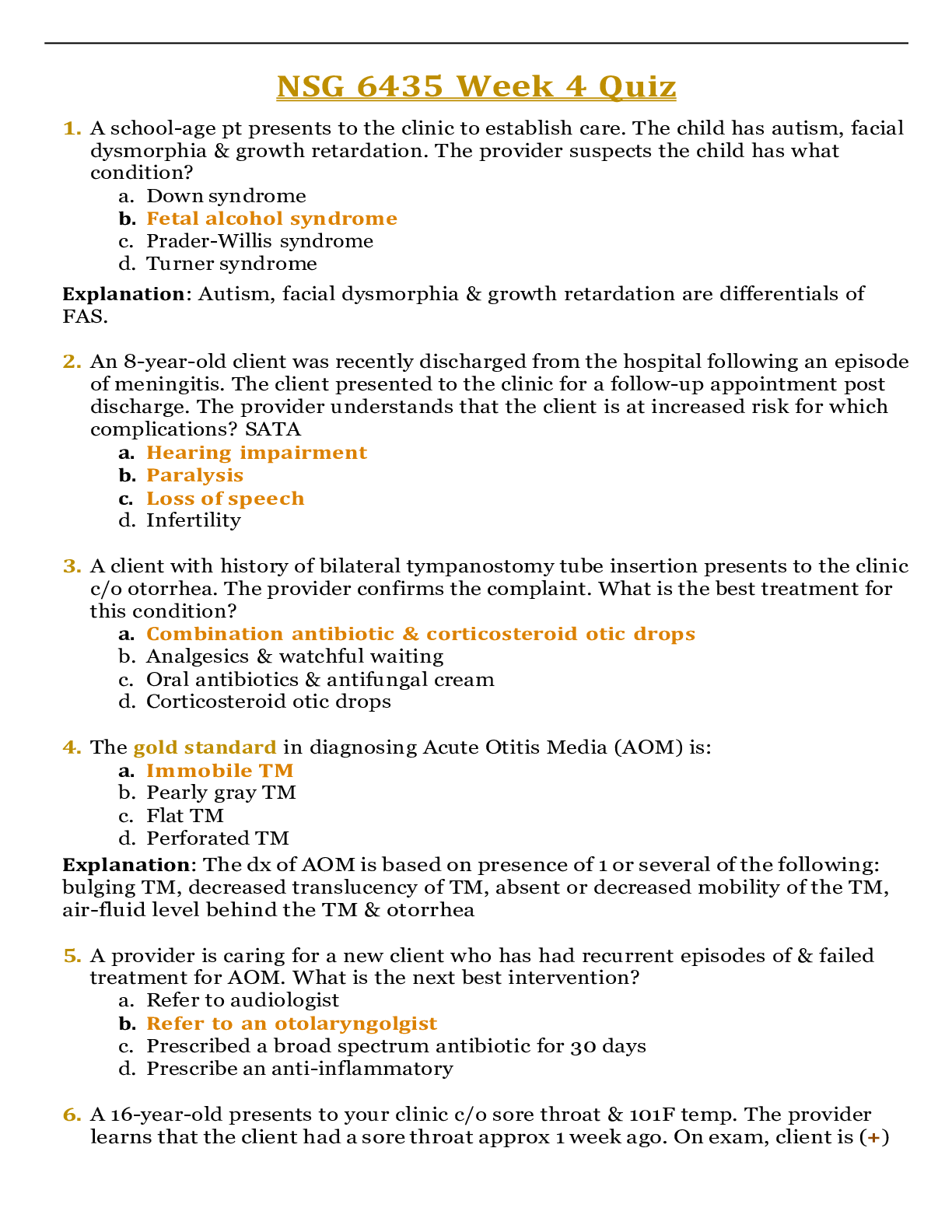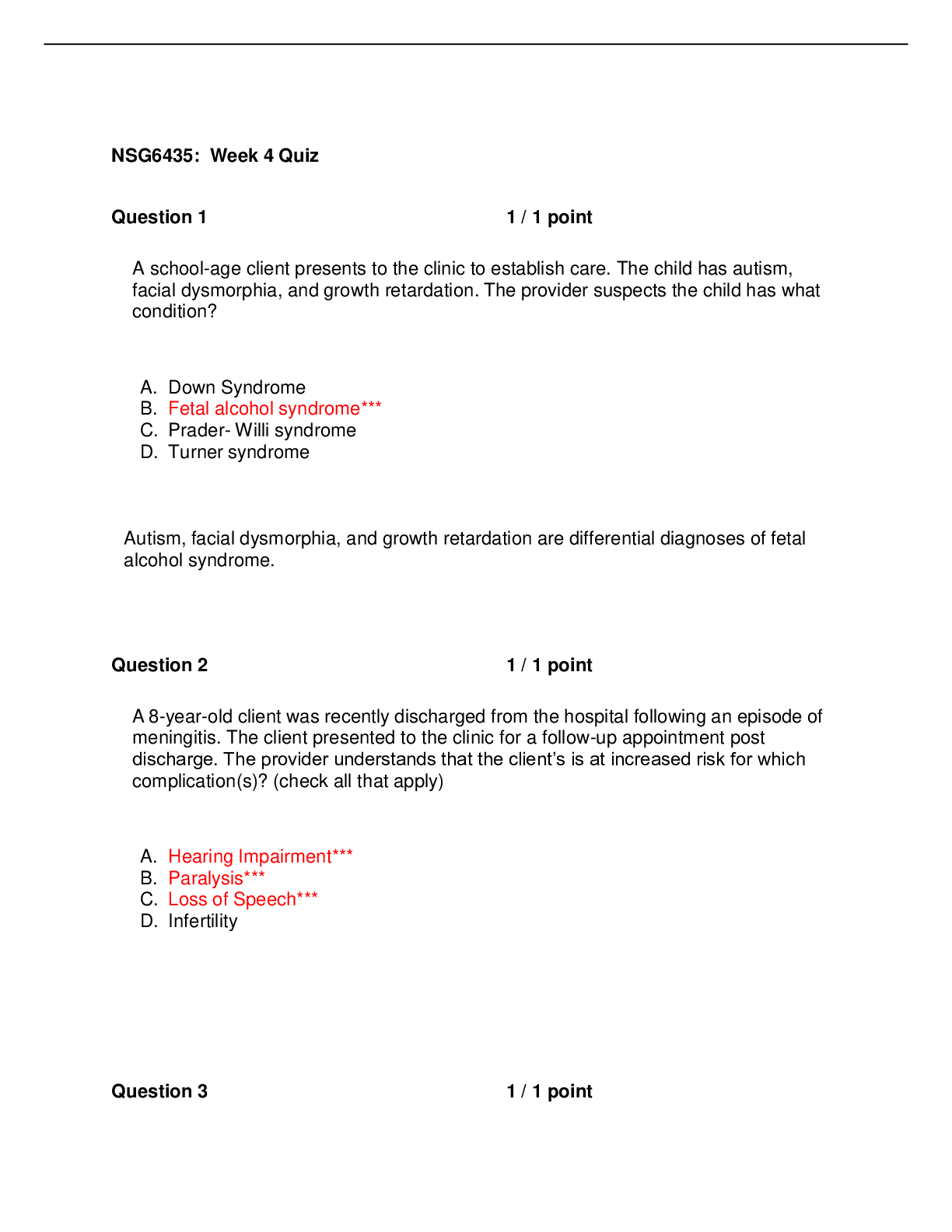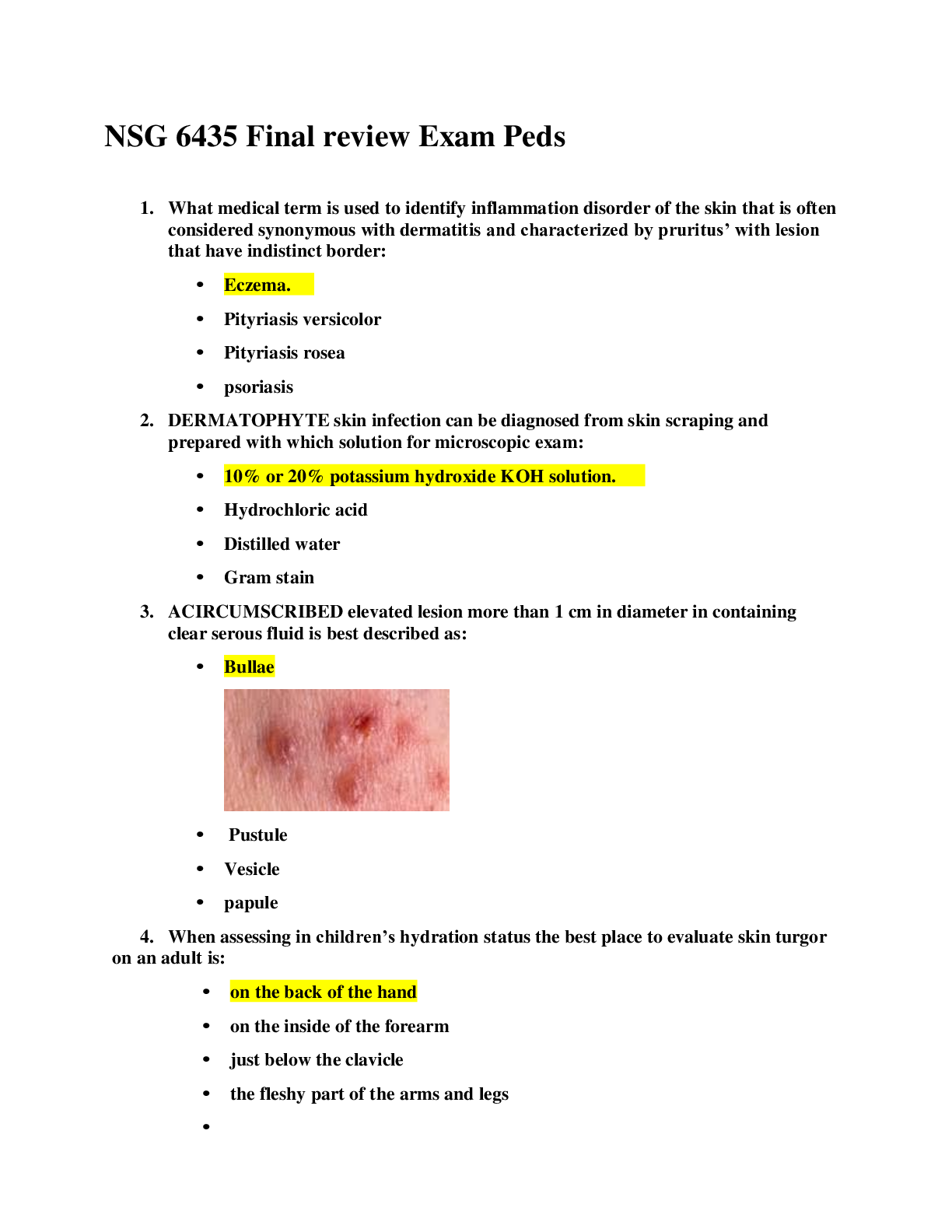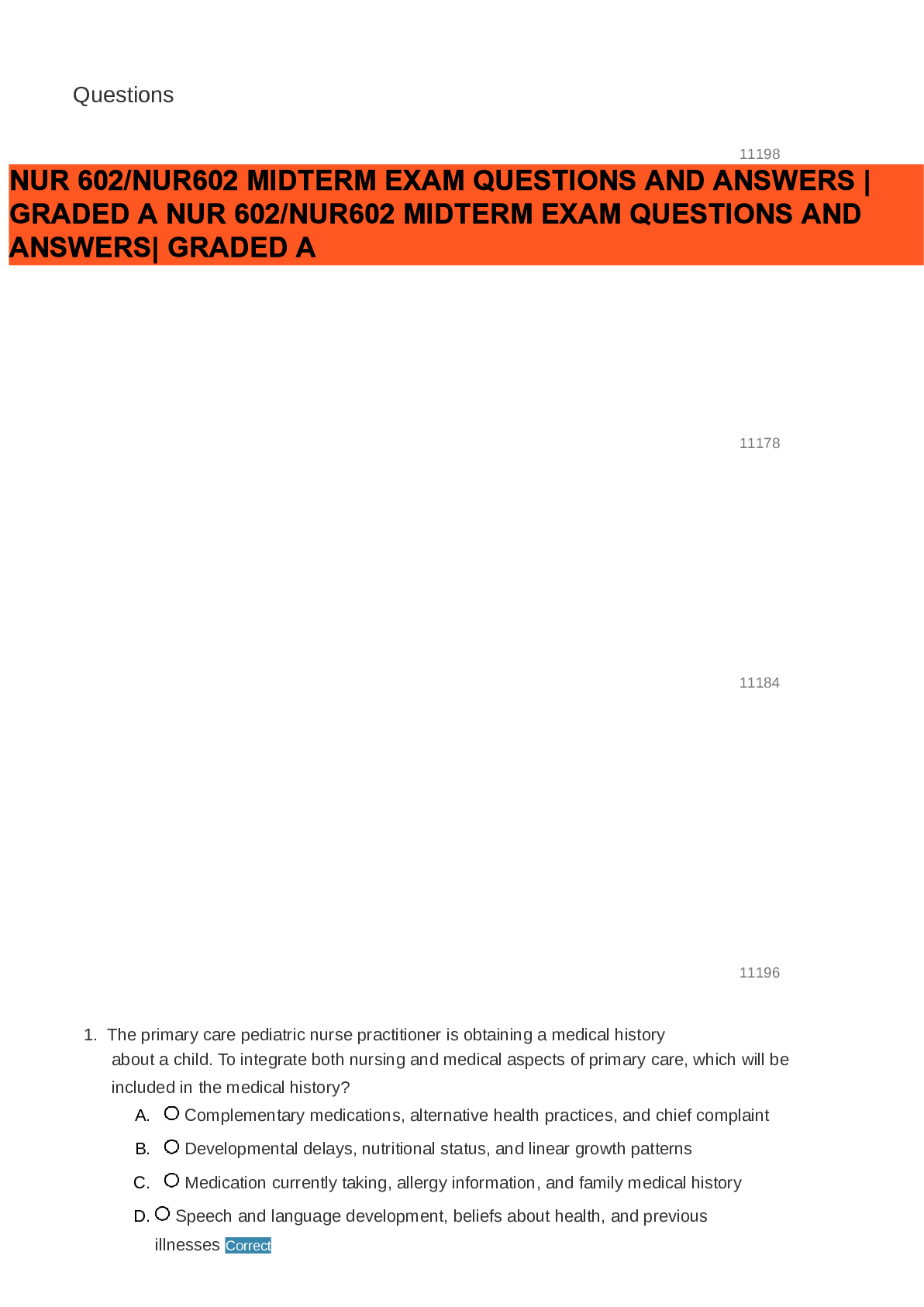Business > QUESTIONS & ANSWERS > University of WaterlooAFM 274Problem Set 6 S19. (All)
University of WaterlooAFM 274Problem Set 6 S19.
Document Content and Description Below
. Text questions: Chapter 24: 2, 10, 12, 13, 14 Note: for problem 24.12, assume that the bonds have a face value of $100. Note that you will need to solve numerically for this problem, so you shoul... d at the very least, understand how to set it up and know what you’re solving for. Chapter 26: 2, 4, 7, 11, 14, 15, 16 Note: for problem 26.7, assume that the outsourcing cost to the billing firm is paid in perpetuity. Chapter 27: 2, 4, 5, 6, 9, 14, 16, 18 Chapter 24 starts here: 2. Assess whether each of the following statements is true, false, or uncertain. Justify your answer. (a) An investor who owns a convertible bond for which the conversion option is just about to expire should convert the bond into common shares if the issuing firm’s current stock price exceeds the conversion price of the convertible bond. (b) Convertibles are an attractive form of financing because they enable the firm to pay a lower interest rate on its debt, thereby increasing the firm’s earnings and hence its stock price. 3. JP Inc. has a bond issue outstanding that has exactly 10 years remaining until it matures. The par value of each bond in this issue is $1,000, and the annual coupon rate is 6% (coupons are paid semi-annually, and the next coupon will be paid 6 months from today). The yield-to-maturity on the bond is currently 5%. The bond is callable today for 110% of par. Should the firm call the bond today? Explain why or why not. 4. CR Inc. wants to issue a bond at its face value of $1,000. The bond is to have a two year maturity. It will pay a coupon of C after one year and another coupon of C plus the face value after the second year. There is no chance that the firm will default on this bond. The risk-free rate is currently 4%, but after one year it is expected to either be 6% or 2%. Each of these scenarios is equally likely (i.e. has a probability of 50%). The firm will retain the right to call the bond for its par value after one year. (Assume that the coupon of C must be paid after one year, and then immediately thereafter the firm can call the bond for its par value.) Investors are risk-neutral, so present values can be calculated by discounting expected future payoffs at the risk-free rate of interest. Assume that the firm will call the bond after one year if the risk-free rate is 2% at that time. What should the coupon payment C be, if the bond is to be issued at its face value of $1,000? [Show More]
Last updated: 2 years ago
Preview 1 out of 3 pages

Buy this document to get the full access instantly
Instant Download Access after purchase
Buy NowInstant download
We Accept:

Reviews( 0 )
$13.00
Can't find what you want? Try our AI powered Search
Document information
Connected school, study & course
About the document
Uploaded On
Aug 07, 2021
Number of pages
3
Written in
Additional information
This document has been written for:
Uploaded
Aug 07, 2021
Downloads
0
Views
60




